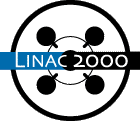
R.H. Miller (SLAC)
Linear Colliders require high gradient (to reduce length dependent costs), high shunt impedance (to reduce power dependent costs) accelerator structures in which the long range dipole wakefields have been reduced by 2 to 3 orders of magnitude. The precise dipole wake reduction factor required depends on many factors including the beam intensity and time structure, the accelerator aperture and accelerating gradient, the strength of the focussing, the alignment precision and position stability of accelerator structures and the focussing elements, the effectiveness of the tuning procedures and feedback system, the pulse to pulse stability of the injected beam, and the required emittance at the final focus. For the purposes of this paper we accept that large reduction factors are required and discuss various approaches to achieving them. There are basically two approaches: detuning and damping, which can be used very effectively in combination. Damping can be accomplished either by introducing loss selectively into regions of the accelerating structure cells, or by coupling the dipole modes out of the accelerating region and absorbing them in external loads of lossy materials. Detuning can be accomplished within each accelerator section or from section to section or both. The goal of detuning is to avoid the coherent summation of the wakefields from all cells in an accelerator, and it is possible to achieve destructive interference so that the wakefields from different cells in the accelerator cancel each other as seen by the bunches of electrons travelling through the linac. Several different approaches have achieved 2 orders of magnitude or more reduction in the long range dipole wakefields so that they pose no restriction on the length of the bunch trains which can be used for linear colliders.
Comments or Questions to
linac2000@slac.stanford.edu